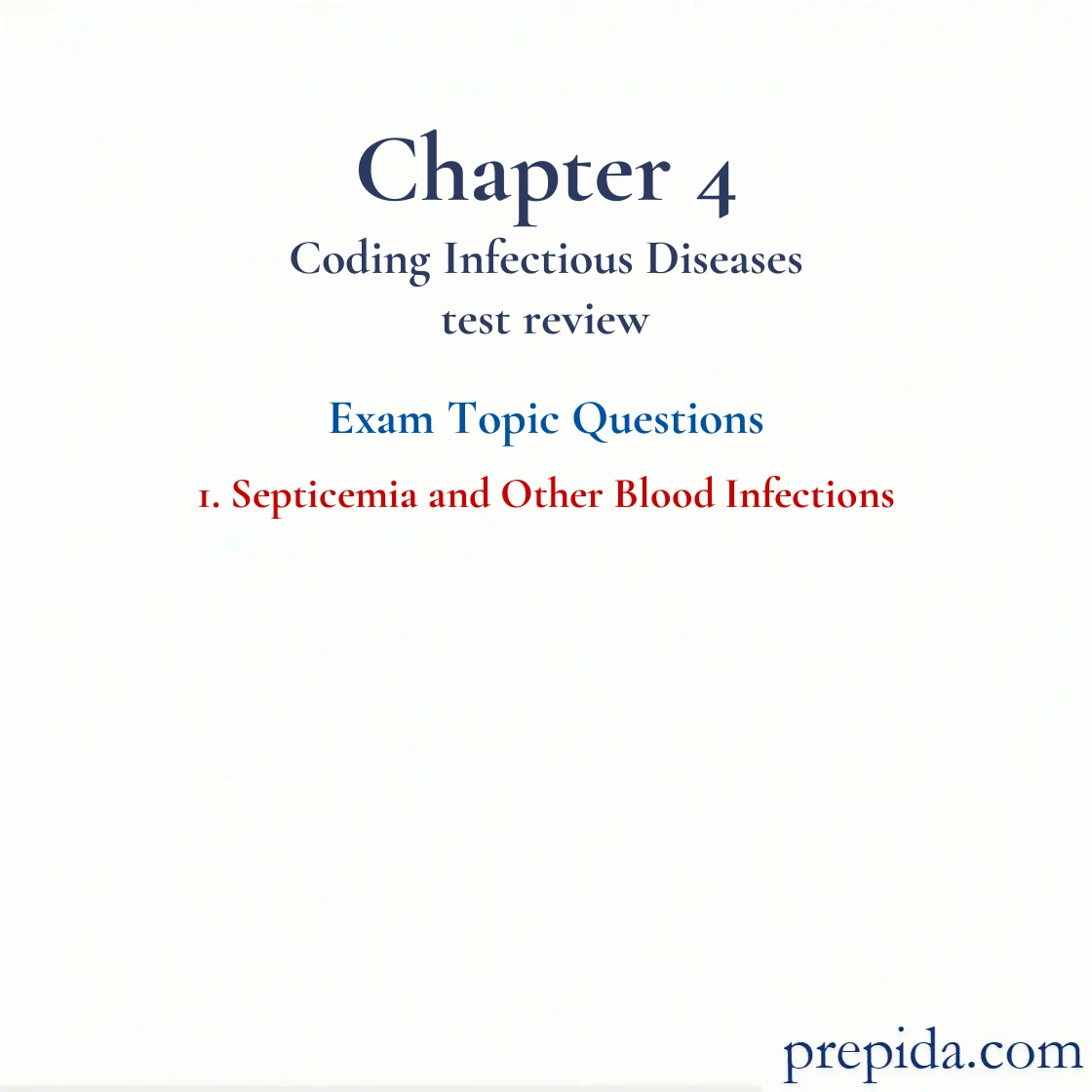
A physical reaction, such as fever and chills, to an unspecified pathogen is a diagnosis referred to by the acronym:
- HIV.
- HPV.
- SIRS.
- ICPs.
Systemic inflammatory response syndrome (SIRS) is a definite physical reaction to an unspecified pathogen.
Diagnosis: A physician’s determination of a patient’s condition, illness, or injury.
The diagnosis of severe sepsis must include a(n):
- known pathogen.
- fever.
- organ dysfunction.
- HIV-positive status.
The diagnosis of severe sepsis includes an organ dysfunction.
Severe Sepsis: Sepsis with signs of acute organ dysfunction.
The diagnosis of sepsis must include:
- a specified pathogen.
- acute organ dysfunction.
- an unknown pathogen.
- HIV-positive status.
The diagnosis of sepsis begins with the identification of the underlying system infection, the pathogen that initiated the septic condition.
Severe Sepsis: Sepsis with signs of acute organ dysfunction.
What is the correct code for a patient diagnosed with sepsis due to group D Streptococcus?
- A40.0
- A40.1
- A41.81
- A40.8
The correct code for a patient with sepsis due to group D Streptococcus is A41.81. A41.81: Index>sepsis>streptococcus>group>D.
Sepsis: Condition typified by two or more systemic responses to infection; a specified pathogen.
The diagnosis of severe sepsis must include:
- identification of the underlying infection.
- which organ system failed.
- the age of the patient.
- identification of the underlying infection and which organ failed.
Three codes are required: the severe sepsis code + underlying infection and specific organ that failed.
Severe Sepsis: Sepsis with signs of acute organ dysfunction.
Coding for septic shock will require:
- 1 code.
- 2 codes.
- 3 codes.
- 4 codes.
There are 3 codes, one for the systemic infection, one for the severe sepsis with septic shock, and one for the organ dysfunction.
E Codes: Codes that report how and/or where an injury or poisoning happened.
Zena is diagnosed with acute meningococcal septicemia. Report this with code:
- A39.2.
- A39.3.
- A39.4.
- A39.5.
Acute meningococcal septicemia is coded as A39.2. A39.2: Index>sepsis>meningococcal>acute.
Acute: Severe; serious.
Which of the following is not a common source for Salmonella?
- Dairy products
- Eggs
- Raw poultry
- Untreated water
Salmonella is not present in untreated water.
Chemicals: Substances used in, or made by, the process of chemistry. Examples include benzene, turpentine, and bleach.